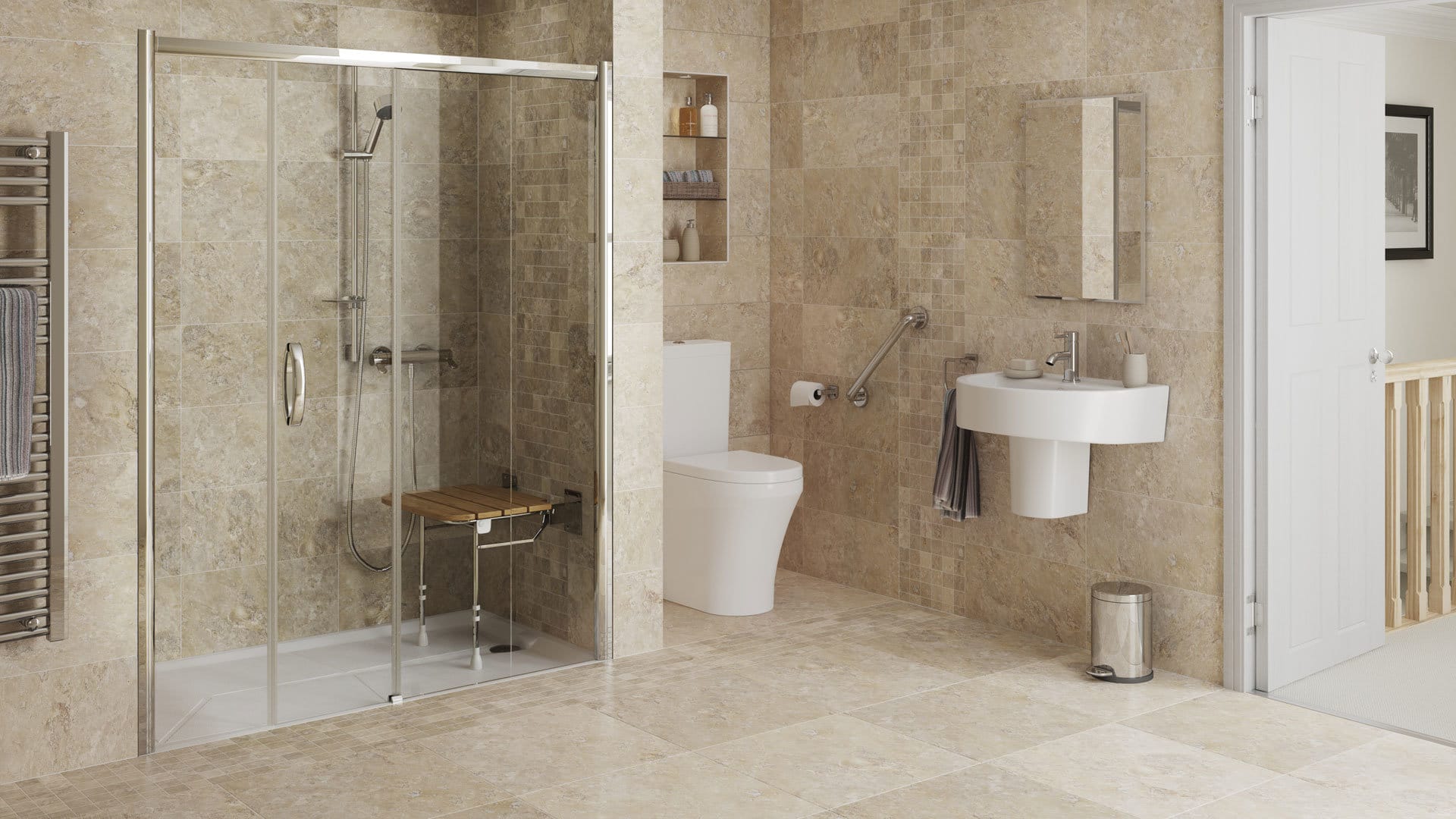Before you even pick up a paintbrush, it’s crucial to understand the specific needs of the senior who will be using the senior bathroom remodel.
- Mobility:
- Consider a walk-in shower with a bench or a curbless entry for easier access.
- Install grab bars strategically near the toilet, shower, and bathtub.
- Ensure ample space for a wheelchair or walker to maneuver.
- Safety:
- Install non-slip flooring throughout the bathroom.
- Use slip-resistant mats in the shower and bathtub.
- Improve lighting with brighter bulbs and consider adding nightlights.
- Accessibility:
- Lower countertops and sinks for easier reach.
- Install a raised toilet seat for easier transfer.
- Consider a handheld showerhead for increased flexibility.
- Comfort:
- Install a heated floor for added warmth.
- Provide a comfortable seating area within the bathroom.
Prioritize Safety Features
Safety should be the top priority in any senior bathroom remodel.
- Non-Slip Surfaces:
- Choose flooring materials with good traction, such as ceramic tile with a textured finish.
- Install slip-resistant mats in the shower and bathtub to minimize the risk of falls.
- Grab Bars:
- Install sturdy grab bars near the toilet, shower, and bathtub.
- Ensure grab bars are properly anchored to the wall studs.
- Adequate Lighting:
- Install brighter lights, especially above the mirror and around the shower.
- Consider adding dimmers for flexibility.
- Install nightlights for easy navigation in the dark.
Enhance Accessibility
Making the bathroom accessible is crucial for seniors with limited mobility.
- Walk-in Showers:
- Eliminate the need to step over a high curb with a walk-in shower.
- Consider a roll-in shower for wheelchair users.
- Curbless Showers:
- Create a seamless transition between the bathroom floor and the shower floor.
- Raised Toilet Seats:
- Make it easier for seniors to sit down and stand up from the toilet.
- Handheld Showerheads:
- Provide greater flexibility and ease of use, especially for those with limited reach.
Improve Comfort and Functionality
While safety and accessibility are paramount, don’t forget about comfort and functionality.
- Heated Floors:
- Provide a warm and cozy feeling underfoot, especially during colder months.
- Comfortable Seating:
- Install a comfortable bench or chair within the bathroom for resting or applying makeup.
- Storage Solutions:
- Incorporate ample storage space for toiletries, medications, and other essentials.
- Consider built-in cabinets or shelves.
- Universal Design Principles:
- Incorporate design elements that are beneficial for people of all ages and abilities.
Choose the Right Materials
Selecting durable and easy-to-clean materials is essential for a long-lasting and low-maintenance bathroom.
- Flooring:
- Ceramic tile is a popular and durable choice for bathroom floors.
- Consider non-slip options with a textured finish.
- Walls:
- Tile is also a good option for walls, as it is easy to clean and resists moisture.
- Consider using waterproof paint on walls and ceilings.
- Countertops:
- Choose easy-to-clean materials like granite, quartz, or solid surface.
- Consider a lower countertop height for easier reach.
- Fixtures:
- Select high-quality fixtures that are easy to use and maintain.
- Consider lever-style handles instead of knobs for easier grip.
Work with a Qualified Contractor
Partnering with a qualified contractor specializing in senior bathroom remodels is highly recommended.
- Experience:
- Seek out contractors with experience in designing and installing accessible bathrooms.
- Credentials:
- Look for contractors with relevant certifications and licenses.
- References:
- Request references from previous clients and check online reviews.
- Communication:
- Choose a contractor who communicates effectively and listens to your needs.
Budget Considerations
Determine your budget upfront and discuss it openly with your contractor.
- Explore Financing Options:
- Consider home equity loans or other financing options to help cover the costs of your remodel.
- Prioritize Needs:
- Focus on the most essential safety and accessibility features within your budget.
- Consider Cost-Effective Alternatives:
- Explore budget-friendly options for materials and fixtures.
Personalize the Design
While safety and accessibility are crucial, don’t forget to personalize the design.
- Choose Colors and Styles:
- Select colors and styles that reflect the senior’s personal preferences.
- Incorporate Personal Touches:
- Add decorative elements such as artwork, plants, or personalized accessories.
- Create a Relaxing Atmosphere:
- Incorporate features that promote relaxation, such as a spa-like shower or a soothing color palette.
Maintain and Update
Regular maintenance is key to ensuring the longevity and safety of your senior bathroom.
- Clean Regularly:
- Keep the bathroom clean and free of clutter to prevent slips and falls.
- Inspect Regularly:
- Regularly inspect grab bars, flooring, and other safety features for signs of wear and tear.
- Update as Needed:
- Make updates and modifications as the senior’s needs change over time.
By carefully planning and executing your senior bathroom remodel, you can create a safe, accessible, and comfortable space that enhances the quality of life for your loved one.




